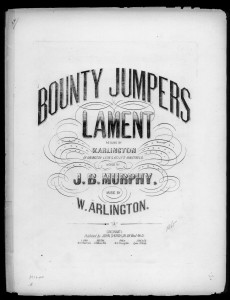From a Seneca County, New York newspaper in January 1865:
Heading off the Bounty Jumpers.
The Elmira Advertiser says Maj. J. Ladd, Paymaster U.S. Army, has been stationed at Elmira, for the purpose of taking charge of the money received as bounty by new recruits in the service. Paymasters have been similarly been sent to all the principal military posts in the country for the same purpose. Under this arrangement Major Ladd, in behalf of the Government, will take into his possession all the money received by each recruit, except $20. He will open an account with each man, and no money can be drawn from him until the recruit reaches the front, unless he is satisfied it is for a bona fide transaction, and for a proper purpose. The arrangement is designed for the benefit of the recruit as well as the Government. Thus, it is hoped, the system of bounty jumping, which has become an enormous evil, will be effectually broken up.
So far I have not seen anything else about the army controlling the timing of bounties paid, but bounty jumpers were still being executed in 1865, as the February 18, 1865 issue of Harper’s Weekly (at Son of the South) points out:
A bounty jumper, named James Devlin, was executed February 3, at Governor’s Island, in the presence of a large number of spectators. The accused had twice deserted from the army, and was convicted for both offenses. In approving the finding of the court-martial, General Dix signified his intention of checking the rapidly increasing and dangerous practice of desertion. The execution was conducted in an admirable manner by the authorities, and impressed all present with its solemnity. The entire command of the island, and a large number of new recruits, were assembled, to whom the spectacle was a terrible warning.
In a comprehensive article about soldiers’ pay at Cincinnati Civil War Round Table William C. Moffat, Jr. mentions bounty jumpers as the “bully boys engaged in the fine art of repeated desertions”.

